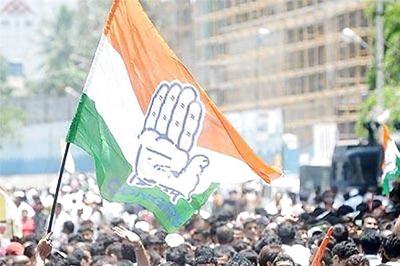
views
In December 2023, the office of the CEA (Chief Economic Advisor) brought out a collection of essays titled ‘Re-Examining Narratives’. This has five heads or chapters — credit ratings, the inequality debate, India’s export basket, financing climate action and India’s G20 presidency. Narratives about India are often negative, unnecessarily so, and not based on facts. An instance is disbelief, among some vocal critics, that India can break out of a 5-5.5 per cent real growth trajectory.
The point about biased narratives has often been made, typically in piece-meal and ad hoc fashion. This is the first time anyone within the government has articulated it systematically. The essays have been reported in the media. I find it surprising that beyond the mechanical reportage, no one has commented on the issues.
Take the case of credit rating agencies (CRAs) and their sovereign ratings. The market is dominated and controlled by the big three — Fitch, Moody’s and Standard and Poor’s (S&P). It’s not that CRAs only do sovereign ratings. For the others (corporate ratings), they haven’t always covered themselves with glory (Enron, sub-prime mortgage crisis). There have been allegations of deliberate malfeasance and non-transparency (Greece, Portugal, Ireland), not to speak of biases against developing economies.
Sovereign ratings matter, though access to funds is determined by other factors too. For a developing economy, an unnecessarily unfavourable sovereign credit rating makes access to long-term finance and also increases the costs of such finance.
Given the importance of CRAs and the big three, the methodology should be transparent and not arbitrary and subjective. That’s the objective hallmark of any rating. But this is not what happens.
While I could have rephrased and stated it in my own words, it is best to quote from the CEA paper. “Our review of the credit rating methodologies reveals that there is considerable reliance on qualitative variables to capture ‘willingness to pay’. The enormous degree of opaqueness in the methodology makes it challenging to quantify the impact of qualitative factors on credit ratings. The significant presence of qualitative factors in credit rating methodologies also gives rise to bandwagon effects and cognitive biases amply reflected in various studies, generating concerns about the credibility of credit ratings,” it said.
“From our quantitative analysis, we find that over half the credit rating is determined by the qualitative component. Institutional Quality, proxied mostly by the World Bank’s Worldwide Governance Indicators (WGIs), emerges as the foremost determinant of a developing economy’s credit rating, which presents a problem since these metrics tend to be non-transparent, perception-based, and derived from a small group of experts, and cannot represent the ‘willingness to pay’ of the sovereign. Their effect on the ratings is non-trivial since it implies that to earn a credit rating upgrade, developing economies must demonstrate progress along arbitrary indicators while simultaneously contending with the discriminations the ratings tend to carry,” it stated.
These are strong words, but they are not without justification.
Worldwide Governance Indicators (WGIs) have often been bandied around as the last word on measuring governance, an expression that is, at best, difficult to pin down. WGI is based on six aggregate governance indicators: (1) voice and accountability; (2) political stability and absence of violence/terrorism; (3) government effectiveness; (4) regulatory quality; (5) rule of law; and (6) control of corruption.
Take, for example, voice and accountability. To quote the World Bank, “Voice and accountability captures perceptions of the extent to which a country’s citizens are able to participate in selecting their government, as well as freedom of expression, freedom of association, and a free media.” Assuming voice and accountability can be measured, and is being measured, what does it have to do with a sovereign credit rating?
Ditto for something like control of corruption. To quote the World Bank again, “Control of corruption captures perceptions of the extent to which public power is exercised for private gain, including both petty and grand forms of corruption, as well as ‘capture’ of the state by elites and private interests.”
If one is gauging sovereign credit ratings, there must be a clear train of thought about how such indicators are linked to what is being measured. It cannot be the case that one uses it simply because WGI is floating around. This is a serious critique of CRAs, one that requires a response.
There is a different critique and that is of WGI itself. Rankings, especially if they are cross-country, need to be done carefully. There is a difference between something that can be objectively measured, through hard data, and subjective responses. Subjective responses are functions of the question being asked, the size of the sample and the person/institution the question is addressed to. WGI doesn’t of course collect information itself, it relies on others.
To take one example, under voice and accountability, we have EIU’s democracy index. India is now classified as a “flawed democracy”. How do we know that? For all countries, EIU asks “experts” 60 questions, which are scored and aggregated. Who are the experts? How many are there? Which country are they from? Are they EIU employees? Since we aren’t given answers to these reasonable questions, the exercise itself is flawed. Yet, this feeds into WGI and WGI feeds into CRAs.
The author is the chairman of the Prime Minister’s Economic Council and a well-known Sanskrit scholar. Views expressed in the above piece are personal and solely that of the author. They do not necessarily reflect News18’s views.



















Comments
0 comment